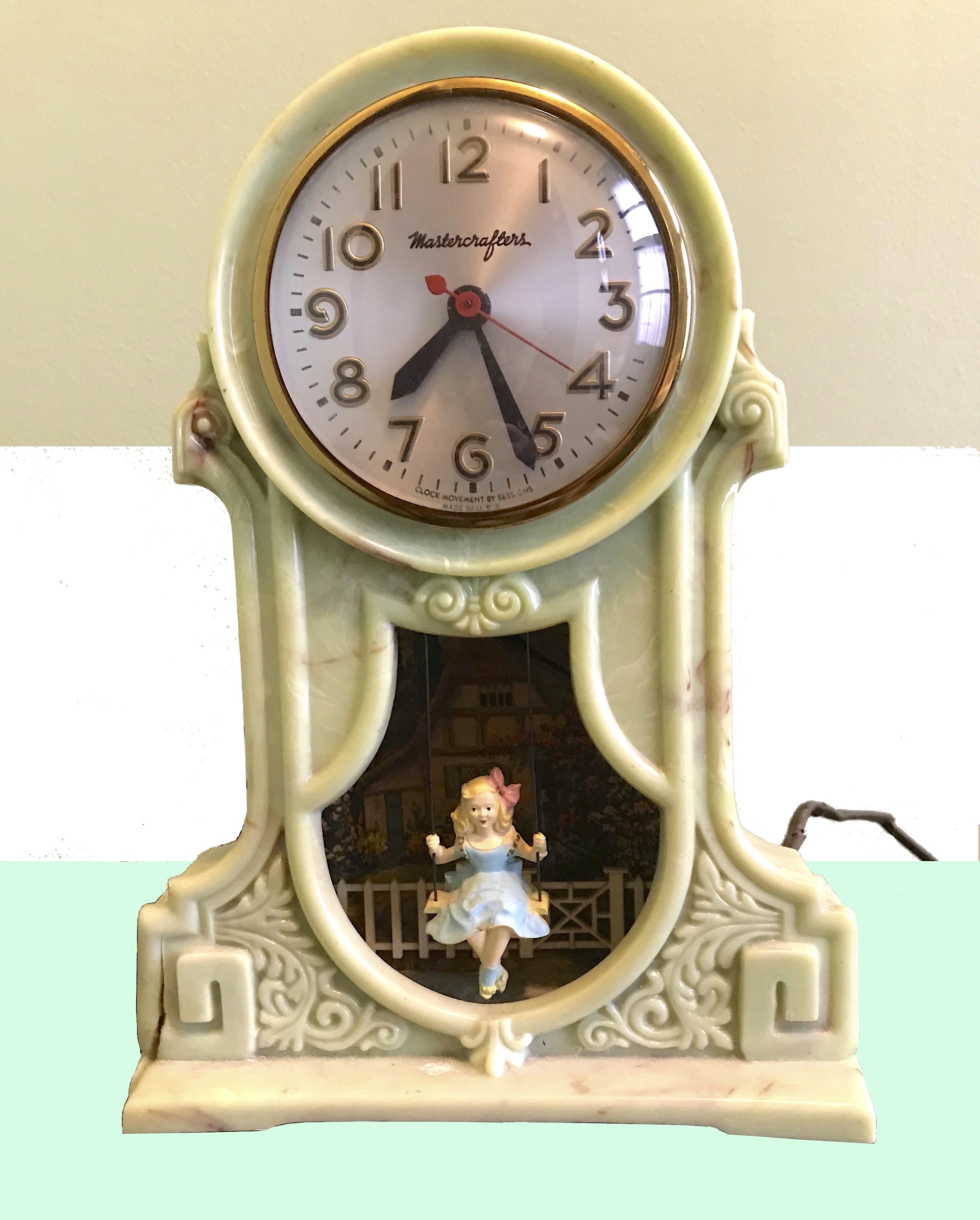
Museum Artifact: “Swing Girl” Electronic Mantle Clock, c. 1950
Made By: MasterCrafters Clock & Radio Co., 216 N. Clinton St., Chicago, IL [Near West Side]
The MastersCrafters Clock & Radio Company was a literal mom and pop shop through most of its 50 year existence—operated first by Ben Lerman and his wife Kate in the 1940s and ‘50s, then by their daughter Doris and her husband Bernard Ellman into the 1980s. And yes, the similarities of the Lerman/Ellman surnames can create some unnecessary confusion in this story, as can the inconsistency in model numbers and mechanisms used across the company’s deep catalog of novelty electric clocks. The appeal of Mastercrafters designs, however, isn’t hard to grasp—as modern gimmicks like illuminated dials and motorized adornments were paired up with various visions of kitschy post-war nostalgia: handsome horses, pretty ballerinas, clipper ships, and cherubic children, to name a few.
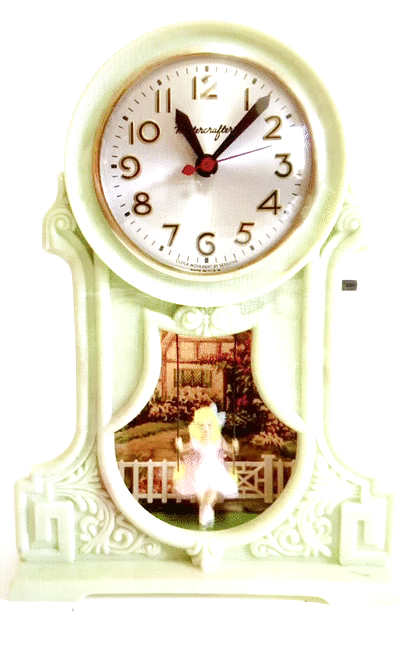
“What sets Mastercrafters clocks apart from other mechanical clocks of its time are the animated features,” says Jimmy Eisenberg, who runs an online store (VintageClockRevival) specializing in the restoration of Mastercrafters’ mid-century “Swingtime” motion models. “From the classic swinging girl to the flickering fireplace clock, they all tell a story that sparks an emotional response. Other clock manufacturers from the 30’s through the 70’s did create motion clocks but they didn’t have the well-finished designs that Mastercrafters produced.”
The “Swing Girl” mantle clock in our museum collection likely dates from the early 1950s, and is one of the more recognizable and increasingly collectible designs the firm created. It wouldn’t be accurate to call it a “rare find” exactly—a whole bunch of these were produced in various iterations over more than a decade. Thanks to a fragile plastic case and fritzy wiring, though, it is quite rare to find one in good working condition—leading to plenty of restoration opportunities for guys like Jimmy Eisenberg.
Back in its day, our green onyx Swinging Girl would have had its quaint background garden scene illuminated from the inside, with an internal motor providing the gentle push needed for the swinging girl to live up to her name. One magazine ad in 1950 painted the full picture:
“The Clock everybody loves . . . the Swinging Girl! Gloriously captures the charm of childhood’s golden days . . . so true-to-life that it actually transports you to an exquisite springtime garden where a lovely girl joyously swings beside a rustic gate. The automatic swinging action of the beautifully detailed girl-figurine is amazingly realistic . . . a built-in indirect night light marvelously enhances the garden scene. Self-starting electric movement . . . Tenite plastic case in Walnut or Onyx finish . . . height 10-3/4”, width 7-3/4”, depth 3” . . . weight 3-1/2 lbs. Retails at $15.95″ [that’s about $170 after inflation].
Ben Lerman applied for a patent on the mechanism for the original Swinging Girl clock in 1948—one of about 30 patents he and his wife collected between 1939 and 1950—although some folks credit this specific invention to Mastercrafters’ longtime chief engineer John L. Hancock, who was known to his cohorts, appropriately enough, as John HanCLOCK.
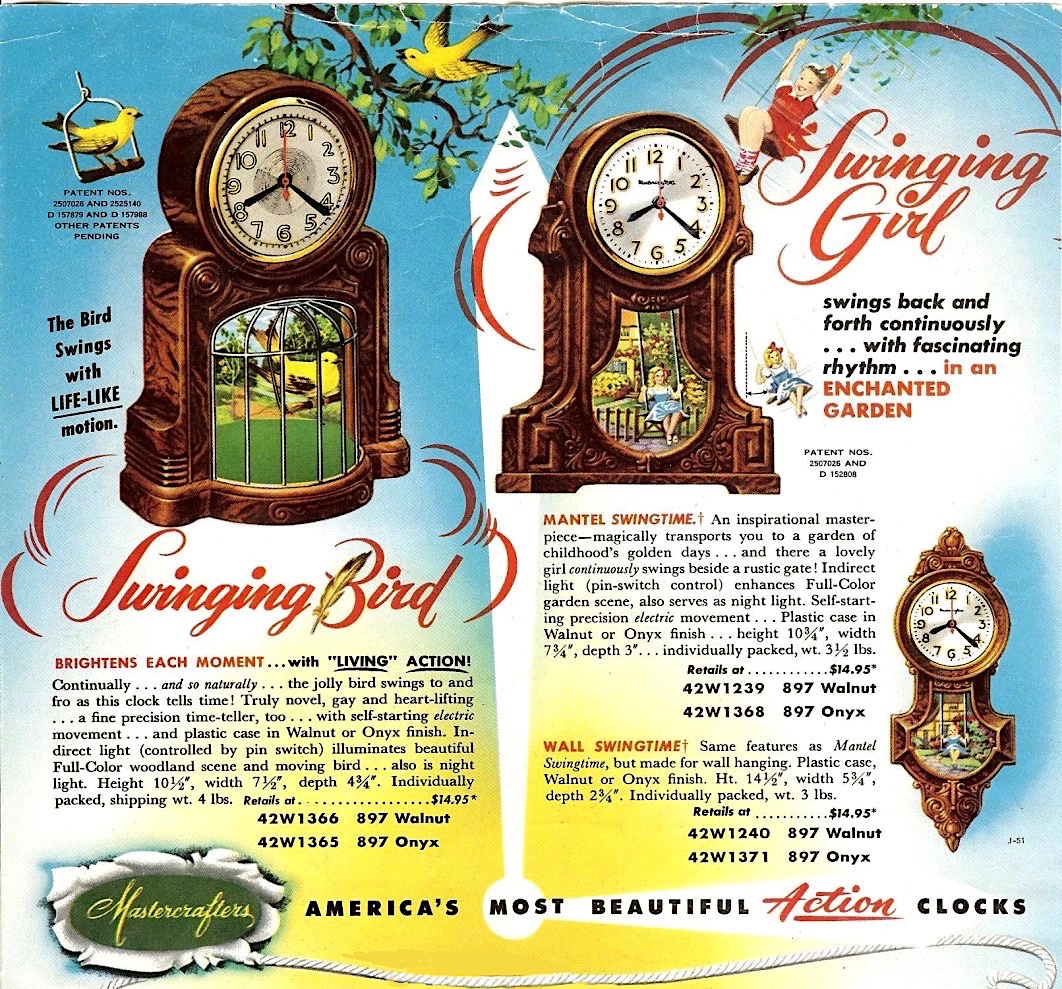
History of Mastercrafters, Part I: The Lermans
In 1920, a 28 year-old Chicago shoe salesman named Ben Lerman married 23 year-old stenographer Kate Reich, and while that life partnership would also become a fruitful business partnership, considerable patience would be required.
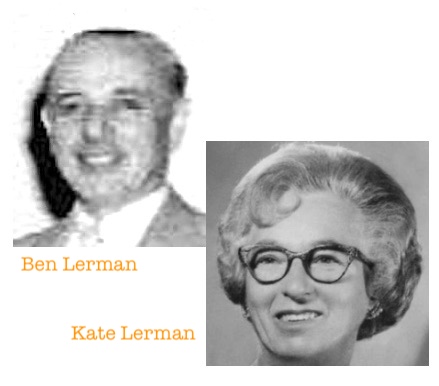 Ben was a Jewish immigrant, born in Lyubar, Ukraine (as Boruch Lernerman), while Kate was a first generation Jewish-American, born in New York to Russian parents. Throughout the 1920s, the young Lermans shared a home in Chicago’s Ukrainian Village neighborhood (2124 W. Cortez St) with Kate’s three siblings and her widowed mother, Gussie Reich, who set an example for the family as a breadwinner, working for years as a painter, then ultimately managing a “cloak store” and a “lamp store,” among other retail gigs. By 1930, Gussie’s son-in-law had followed a similar path; after years as a shoe and jewelry salesman, he hoped to better his economic odds in the Depression by going into business for himself, running a “novelty factory,” according to the census that year.
Ben was a Jewish immigrant, born in Lyubar, Ukraine (as Boruch Lernerman), while Kate was a first generation Jewish-American, born in New York to Russian parents. Throughout the 1920s, the young Lermans shared a home in Chicago’s Ukrainian Village neighborhood (2124 W. Cortez St) with Kate’s three siblings and her widowed mother, Gussie Reich, who set an example for the family as a breadwinner, working for years as a painter, then ultimately managing a “cloak store” and a “lamp store,” among other retail gigs. By 1930, Gussie’s son-in-law had followed a similar path; after years as a shoe and jewelry salesman, he hoped to better his economic odds in the Depression by going into business for himself, running a “novelty factory,” according to the census that year.
It’s not clear what that early enterprise was called or what it peddled, but as early as 1933, Benjamin Lerman’s name appears on a patent for a “scenic display device,” which was later put to use in a clock produced by the Ceramic Clock Company—an apparent sister business to Mastercrafters.
By the early 1940s, the Mastercrafters name had come into use (as the Mastercrafters MFG Co.), and a plant was established on the sixth floor of a building at 216 N. Clinton Street in the West Loop. Kate Lerman was also involved by this point, not just in co-managing the business, but possibly as its central creative force.

[Mastercrafters was headquartered on the sixth floor of this building at 216-226 N. Clinton Street from 1939 to 1958, along with a lot of other novelty manufacturing businesses. The building has since been converted into loft apartments.]
Between 1939 and 1941, Kate secured patents, under her own name, for at least a dozen different ornamental designs for ” a clock, radio, or similar article.” The blueprints weren’t revolutionary in concept, perhaps—sail boats and propellor planes mostly—but they revealed a keen eye. In fact, Kate’s three-masted miniature ship design (featuring a wood base and metal sails) may have essentially launched the Mastercrafters business in ’39, used first as a housing for a short-lived radio known as the “Melody Cruiser.”
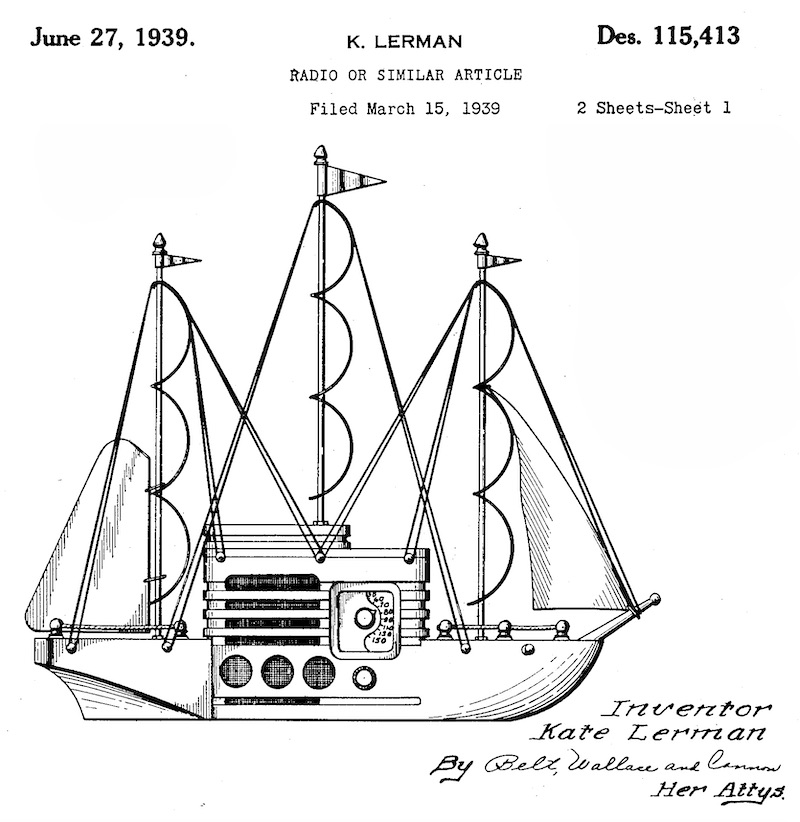 The new company was just coming into its own when the U.S. entered World War II in 1941. Over the next few years, as new wartime rationing and manufacturing rules were instituted, only a few U.S. companies were still permitted to produce clocks, and Mastercrafters wasn’t one of them. Instead, the Lermans kept the plant going by making screw machine products for the military under the temporary name Mastercrafters Machine Products.
The new company was just coming into its own when the U.S. entered World War II in 1941. Over the next few years, as new wartime rationing and manufacturing rules were instituted, only a few U.S. companies were still permitted to produce clocks, and Mastercrafters wasn’t one of them. Instead, the Lermans kept the plant going by making screw machine products for the military under the temporary name Mastercrafters Machine Products.
By 1947, with the war in the rearview, the business re-organized as an Illinois corporation under the name Mastercrafters Clock & Radio Company. But it’s hard to say they were picking right back up where they’d left off. Kate Lerman doesn’t appear to have applied for any more patents of her own, suggesting she either took a less active role or—perhaps more likely—let her husband and other male designers take all further credit. Despite the company’s new name, the “Radio” part of the business never really re-emerged either, as Kate’s pre-war masted ship is considered by some researchers to be the only actual Mastercrafters radio ever sold. The same casing was used for many years after, however, as one of the company’s popular clock models, the “Yankee Clipper.”
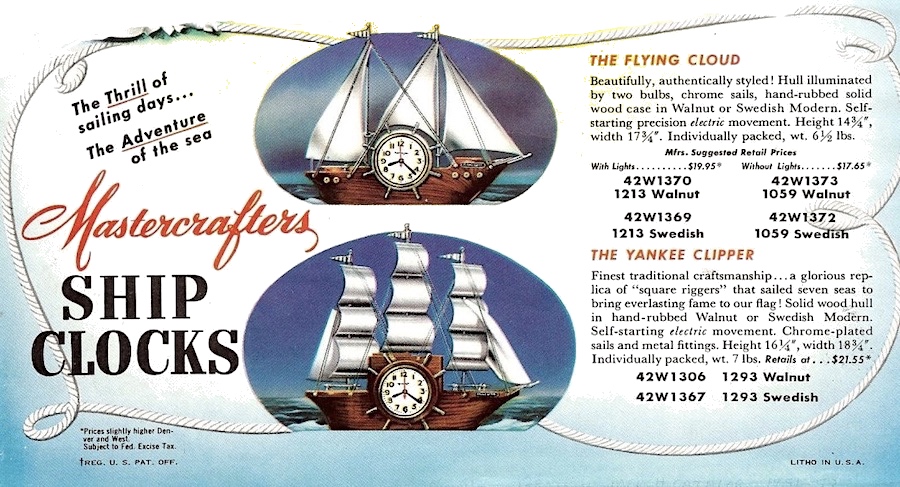
II. The Swinging ‘50s
Most of Ben Lerman’s post-war patents related to the aesthetic appearance of various clock cases, but the model that would come to be known as the Swingtime was a far more complex invention, suggesting chief engineer John Hancock’s involvement. It was described in the 1948 patent application as:
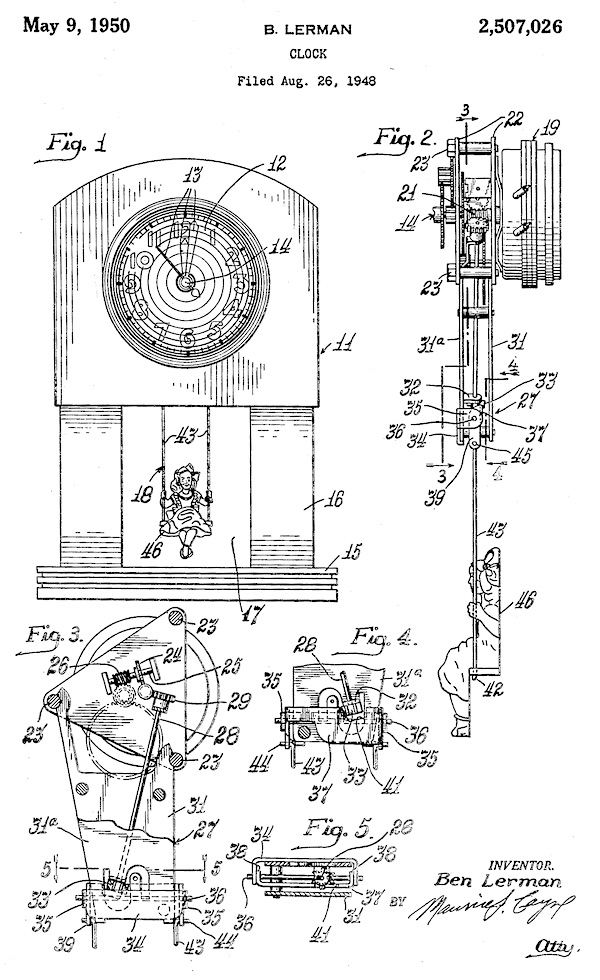
“. . . an electrically driven clock embodying a novel swing action movement effective to actuate an ornamental pendulum in a vertical plane perpendicular to the plane of the clock face. . . . In prior known devices of this character, the swinging pendulum is intimately associated with the clock’s mechanism. In the present disclosure the pendulum is connected with a swing action movement actionable by engagement with a continuously rotatable but wholly independent drive means.”
This same “novel swing action” was used in several other Mastercrafters wall and mantle clock designs into the 1950s and 1960s; including not only the Swinging Girl, but “Bird on a Swing” and “Swinging Playmates.” Over this same period, the company also repeatedly used the same basic plastic case seen in the Swinging Girl design; recognizable as late as 1970 in some of the company’s other popular motion clocks, including the “Magic Lite” and “Waterfall”—which created the appearance of movement through reflected light, rather than a pendulum.
Possibly Mastercrafters’ longest tenured clock was another of these light-motion designs: the “Fireplace”—convincingly animated through a mechanism developed by John Hancock. Over 20 years, the Fireplace clock was made with several different types of clock movements, as the company shifted from using Sessions movements (as seen in the Swingtime) to Sunbeam movements to whatever else fit the mold. Another popular model, known to collectors as “Horse Over Clock,” confusingly switched from using a mold created by Hartland Plastics to a nearly identical one credited to the Breyer Molding Company. Switching horses in midstream, to forgive the expression, was the norm at the Mastercrafters offices.
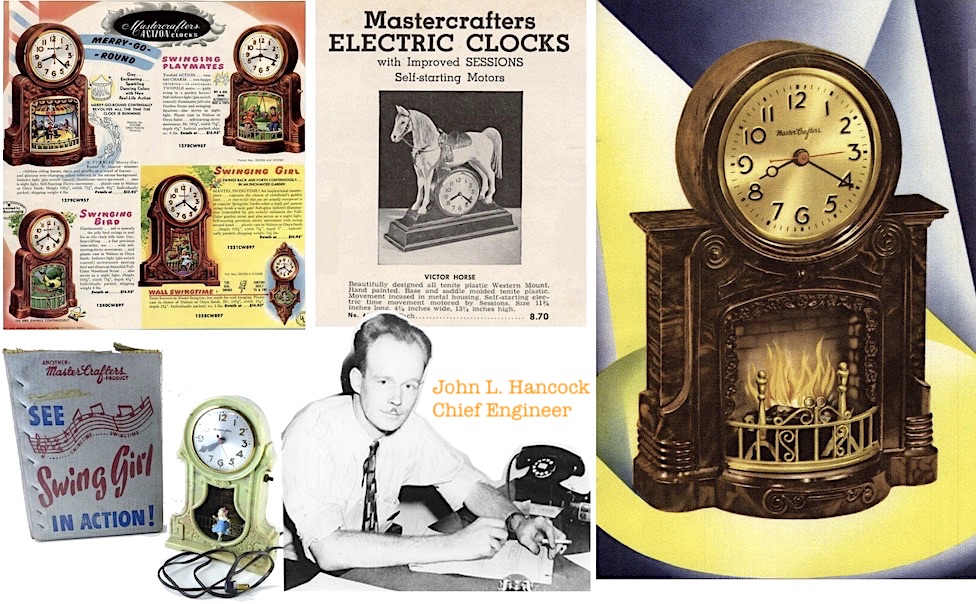
[Clockwise from top left: Mastercrafters “Action Clocks” ad from 1950; “Victor Horse” clock ad from 1949; “Fireplace” clock ad from 1954; John L. Hancock at work in the Mastercrafters offices; the box that came with the Swinging Girl clock in the ’50s: “See Swing Girl in Action!”]
“Mastercafters seemed to work with whatever parts they had at hand,” Jimmy Eisenberg notes. “Even though every clock looks the same on the outside, inside there are several variations of clockworks, parts and method of assembly. They even repurposed existing mechanical and decorative parts to create new styles.”
Sometimes, those “new styles” fell more into the “knockoff” category, as Mastercrafters did what a lot of smaller manufacturers do—basing some of its designs on established “luxury” models in an effort to undercut the competition at lower prices. In 1955, for example, the Mastercrafters Model 308 “Dorell” clock drew the ire of esteemed Swiss manufacturer Vacheron & Constantin-LeCoultre, who claimed the design blatantly ripped off its famed “Atmos Clock.” Unlike the Atmos, which was operated by atmospheric pressure and sold for $165, the Mastercrafters 308 was electric and went for about 30 bucks. Even so, a circuit court judge eventually determined that “some customers would buy Mastercrafters’ cheaper clock for the purpose of acquiring the prestige gained by displaying what many visitors at the customers’ homes would likely assume to be an Atmos clock. . . . Neither the electric cord attached to, nor the plaintiff’s name on its clock would be likely to come to the attention of such a visitor; the likelihood of such confusion suffices to render plaintiff’s conduct actionable.”
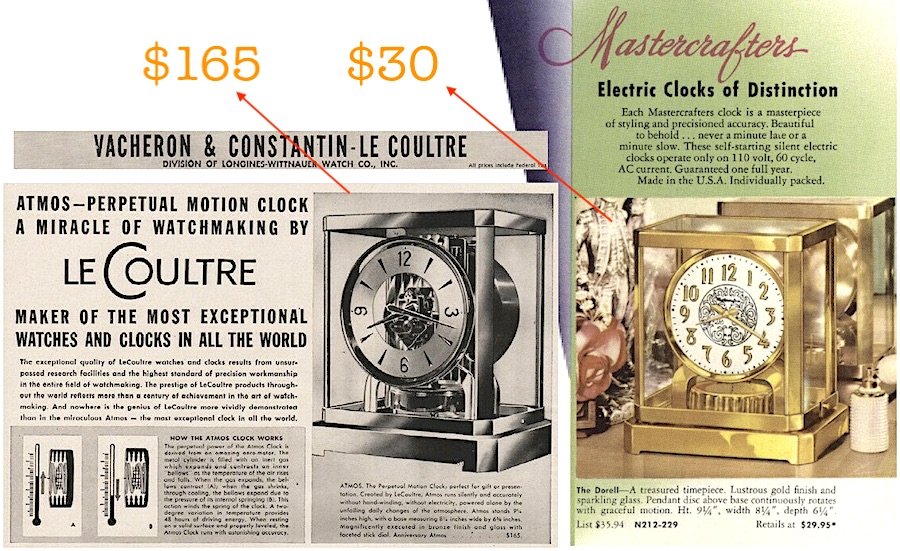
[The LeCoultre Atmos Clock, left, operated on atmospheric pressure and cost $165 in 1950. Mastercrafters’ electric knockoff version, the Dorell, sold for less than 20% of the cost and got them in legal hot water, forcing a design change.]
To be fair, these copycat games were a two-way street. The beloved “Swinging Girl” herself—a Mastercrafters original—was apparently fabricated by some other fly-by-night clockmakers shortly after its debut, prompting the Lermans to take out an ad in Billboard magazine in 1950, expressing their intention to “vigorously prosecute all infringers” on the Swingtime patent.
In Mastercrafters’ later years, the company seemed to bow out of the intellectual property game altogether, never seemingly applying for another patent after 1970—perhaps in recognition that, in the deep sea of budget-priced electric clocks, it was just as easy to get ripped off as to rip off somebody else. The litigation just wasn’t worth it.
III. The Ellmans
In 1958, Ben and Kate Lerman handed over the day-to-day control of Mastercrafters to their daughter Doris Ellman (b. 1922, Chicago) and son-in-law Bernard Ellman (b. 1921, Chicago). Bernard—who was a World War II vet and the son of a hardware store owner—married Doris in 1946. Like the Lermans, the Ellmans’ partnership was a 24/7 arrangement, at home and at work. Their marriage would ultimately outlast the business, as the self-described “soulmates” were together for 68 years, up until Bernard’s death in 2014.
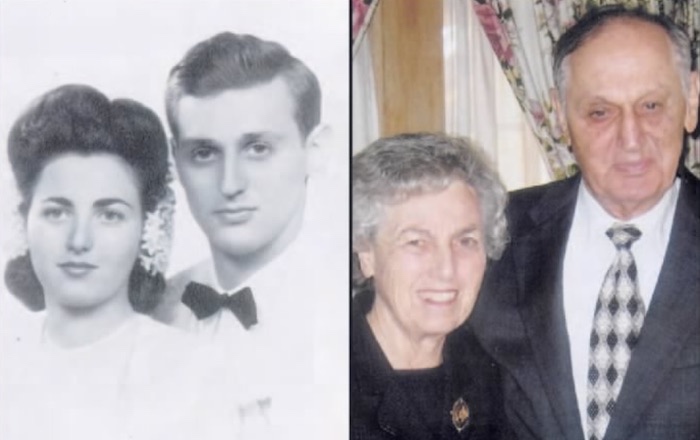
The Ellman era at Mastercrafters began with some immediate challenges, starting with a move to a new factory in 1959, located at 1750 W. Fulton Street. That summer, retired chairman Ben Lerman also passed away at 66, putting a bit more pressure on the new generation to carry the torch.
Going into the 1960s, Mastercrafters (which finally simplified its identity to the Mastercrafters Clock Corp. in 1964) continued to produce many of its popular designs from the previous decade, including the Yankee Clipper and the Fireplace. The familiar Swinging Girl even resurfaced in a new line of “cottage clocks.”
According to a 2004 article in the NAWCC Bulletin (National Association of Watch and Clock Collectors), however, the Ellmans generally pushed the firm in a “more sales driven orientation,” heavily promoting some less memorable but equally gimmicky new designs—such as a series of sports figure clocks (a golfer, a baseball player, a football player, etc.), a percolating teapot, and a new line of glass of “TV clocks” developed by John L. Hancock, with glittery space-age designs known by names like “Starlight,” “Action Starlight,” and “Eternalight.”
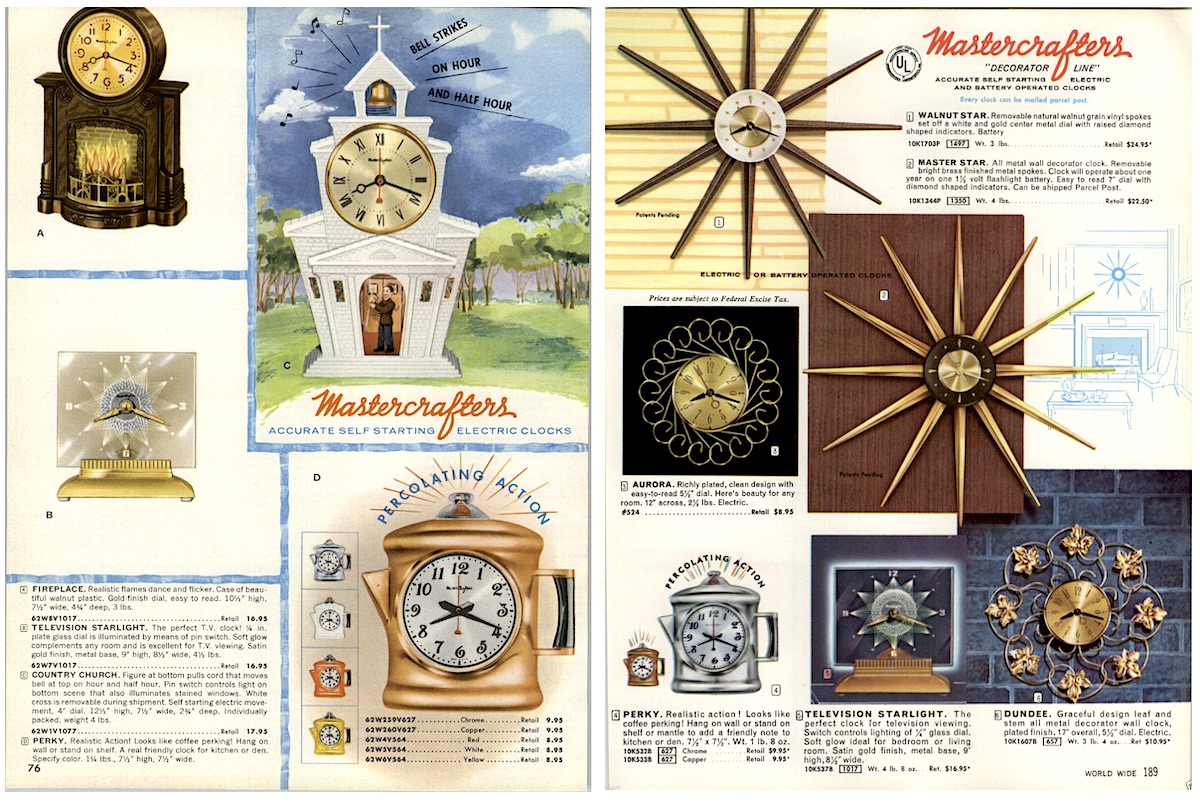
[A pair of ads from the Ellman era, dating from 1959 (left) and 1962 (right)]
“Mastercrafters was very aggressive sales wise,” according to the NAWCC article, “with representatives throughout the United States, Canada and South America targeting retail outlets. Display racks for the retailer’s use were provided free with orders for clocks. . . . Retail chains such as McCrorys, K-Mart, and the True Value and Ace Hardware chains sold Mastercrafters clocks. Many of the large catalog companies, including Bennett Brothers, Beckers, Braudes, Sears, and Montgomery Ward also carried the line, advertising the clocks with ad layouts provided by Mastercrafters.”
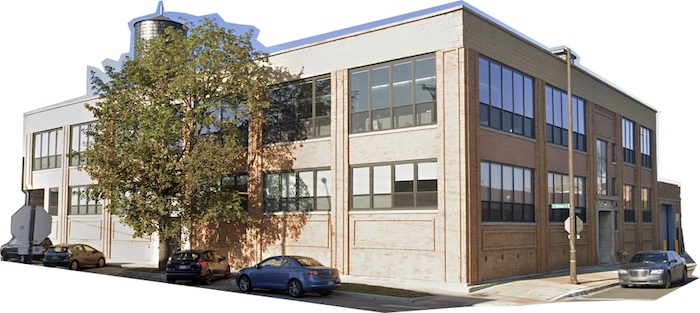
While the ‘50s are generally considered to be the company’s heyday, it seems clear that this small but prolific little clock business created a good life’s work for the Ellmans and their team for many years beyond that point. After the death of engineer John Hancock in 1976, though, the metaphorical motor of the enterprise did begin to slow.
Finally, in 1980, Doris and Bernard elected to sell Mastercrafters to Creators, Inc.—a firm owned by Doris’s cousin Lester Lerman, hence keeping it in the family a while longer. As a subsidiary, the Mastercrafters offices moved to 1642 Besly Court for the next five years, and while this era produced a few interesting designs, including the “Infinity Mirror” series, it was short lived. Another sale in 1985 sent Mastercrafters over to ISM, Ltd., located at 672 E. Irving Park Road in Roselle, IL, and by 1988, production ceased for good. Notice that I skillfully avoided any puns about “time running out” on the clockmakers.
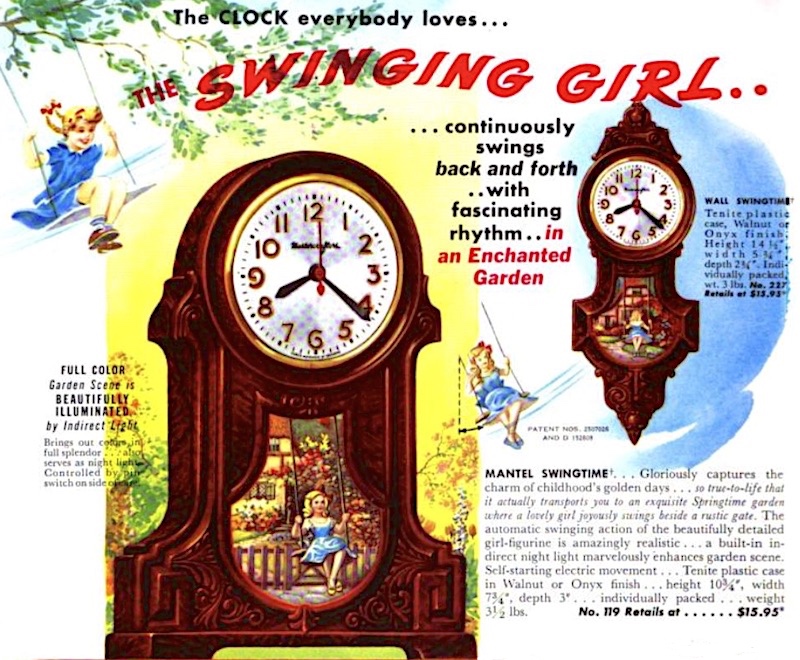 Bernard Ellman would later estimate that Mastercrafters produced between five and six million clocks across from 1939 to 1985; a stunning figure for a relatively obscure company, and certainly more indicative of America’s move toward cheap plastic gadgets over actual “master craftsmanship.” Nonetheless, there was real thought, passion and skill put into many of Mastercrafters most popular models, and nearly forty years since the firm dissolved, its appreciation among collectors only seems to be growing.
Bernard Ellman would later estimate that Mastercrafters produced between five and six million clocks across from 1939 to 1985; a stunning figure for a relatively obscure company, and certainly more indicative of America’s move toward cheap plastic gadgets over actual “master craftsmanship.” Nonetheless, there was real thought, passion and skill put into many of Mastercrafters most popular models, and nearly forty years since the firm dissolved, its appreciation among collectors only seems to be growing.
“What appeals most to me about Mastercafters clocks is the nostalgia,” Jimmy Eisenberg says. “From the ornate design of the case to the sound of the mechanical clockworks running; it brings me back to when I was a kid watching my own mother’s Swingtime clock running. Nearly every guest that visits my online shop shares a story or family connection to these clocks. Folks have a strong emotional attachment to them, no matter which style.”
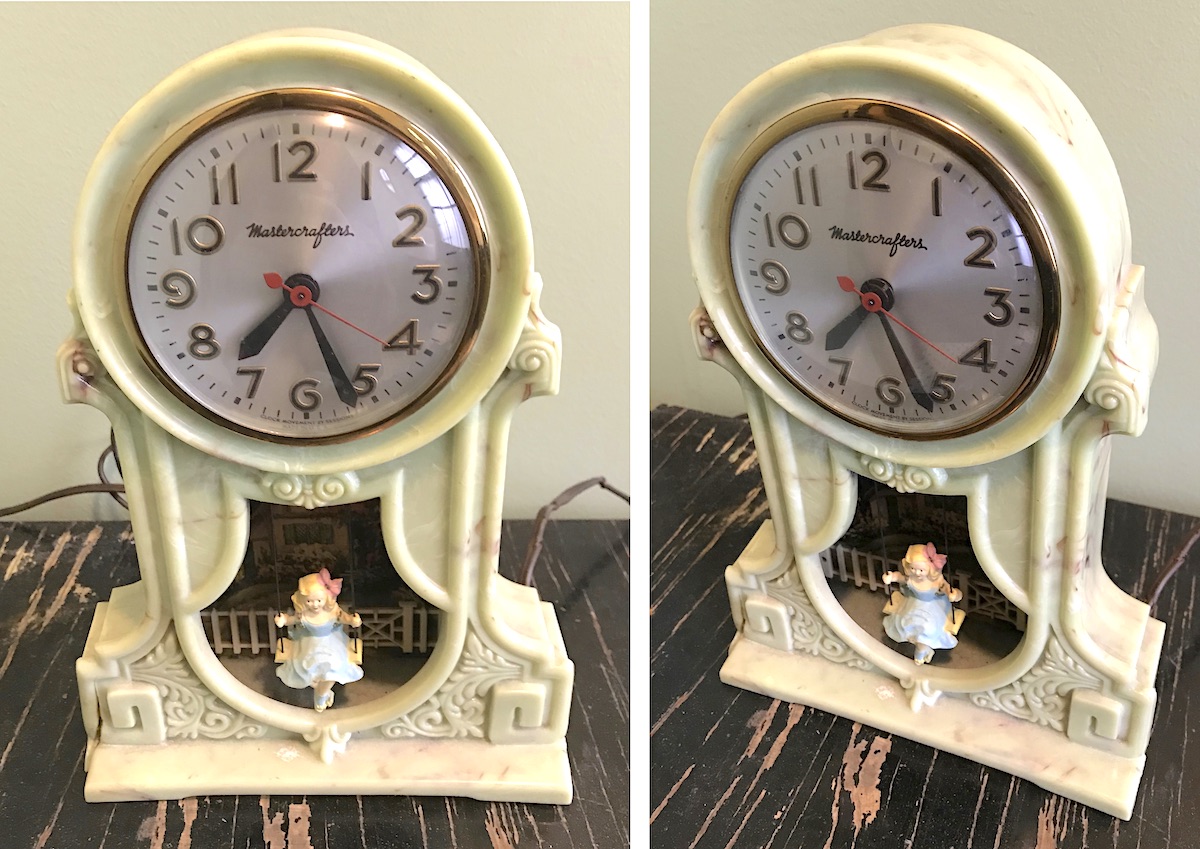
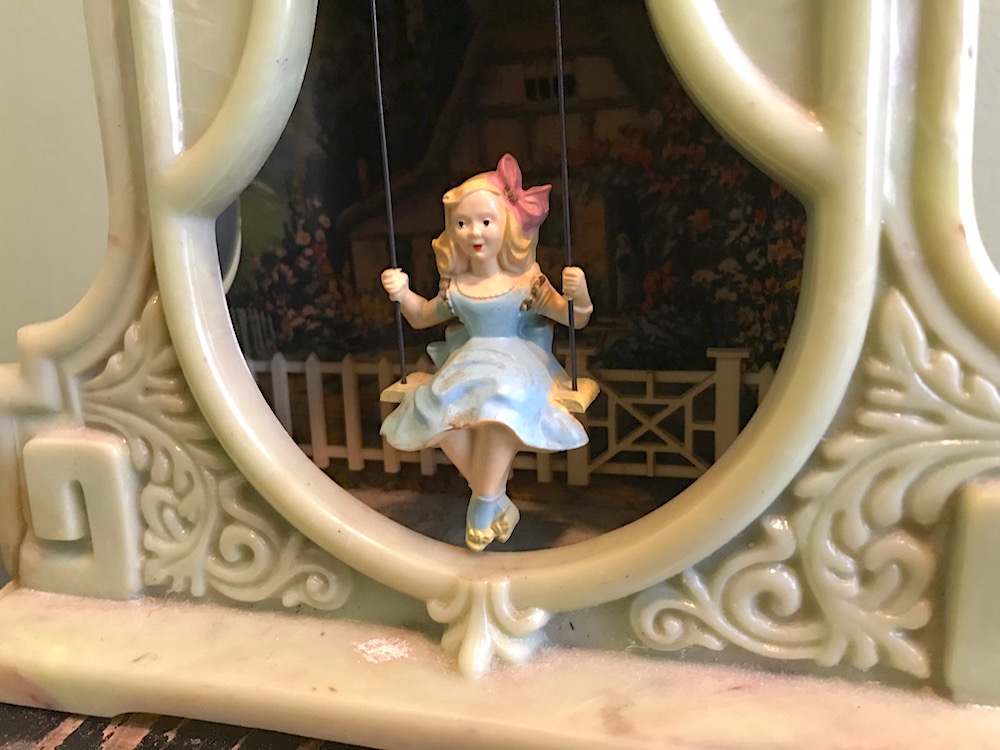
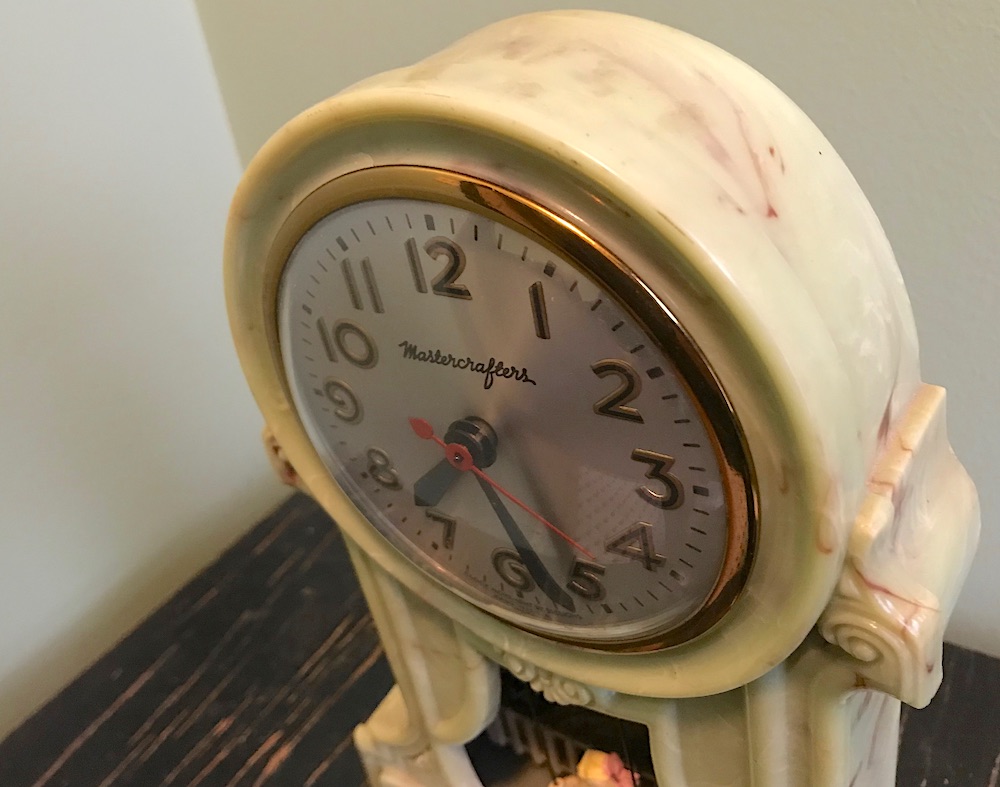
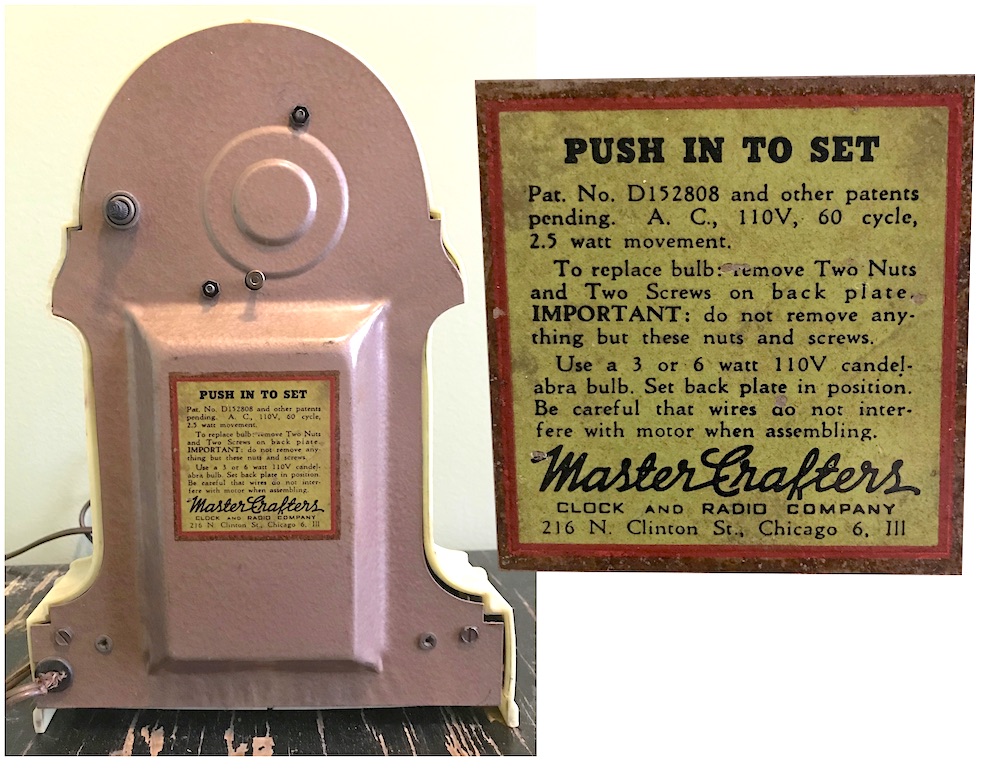
Sources:
“The Mastercrafters Story: 1939-1988,” by W. Clark Eldridge & William F. Keller – NAWCC Bulletin, Vol. 46/5, No 352, 2004
Vintage Clock Revival – Etsy Store
“Mastercrafters Clocks” – MyHartlands.com
“Important Patent Notice” – The Billboard, June 24, 1950
Ben Lerman Patent: Clock, U.S. patent 2,507,026A
Copyright and Unfair Competition, by Benjamin Kaplan and Ralph S. Brown, Jr., 1958
Ben Lerman obit, Chicago Tribune, July 28, 1959
Kate Lerman obit, Chicago Tribune, Jan 23, 1992
Bernard Ellman obit, Chicago Tribune, Jan 28, 2014
Doris Ellman obit, Chicago Tribune, July 21, 2016

I am searching for a Mastercrafters clock replacement motor for the model 11, boy and girl on swing. Can you give me any assistance in finding these motors.
Thank you very much.
Richard H. Moeller
706-540-9060
I have a master crafter yankee clipper. Can you tell me the value? Or are you interested in?
I have a Yankee Clipper Clockship that still has the price tag on it! The tag shows “No. 740” and the price $12.95. It still works and has all the intricate rigging. The clock face says “Sessions Self Starting” between the 10 and 2. Made in U.S.A. is printed below the 6. Every other Yankee Clipper I have seen has “Mastecrafters” in script across the face and “Clock Movement by Sessions” under the 6. The vintage price lists I have found show the price as $19.55-$21.55 so $12.95 must mean it is a very early one.
I am writing here with the hope of someone knowledgeable might know something about the history of this clock.
I have the swinging girl clock. I’m wondering if I could get the base fixed. Everything else seems to be working.
Hello Jim:
I specialize in the restoration of Mastercrafters electric clocks. I’m especially proud of my case restorations. I produced a silicon mold from a perfect case. I can place your cleaned clock case in this mold and fill the missing parts with matching plastic resin.
While I have your clock, I can completely dismantle it down to the smallest gear, clean, inspect, oil and replace damaged parts and replace any questionable wiring.
Kindest regards,
Jimmy
I can’t thank you enough for giving this information about my grandparents that I was unfamiliar with. Lawrence Lerman raised me even though he was not my biological used to go to the Fulton location on Saturdays and help my father open the mail, place the warranty cards and write around in a golf cart fulfilling orders. I have some very fond memories of business at a very young age from my father Lawrence Lerman, thank you for sharing some of the things that I knew nothing about before I was . to this day, I have extremely knowledgeable information and blessings from retail industry pass down by my grandparents and my father. Thank you so much for sharing. It all makes sense now! Mar Toscano Solomon
I have a Mastercrafters fireplace clock and need to replace the cord (it’s brittle) and while I have it opened up, would like to know how to clean and oil it to keep it running well. Any suggestions will be appreciated.
I have a perfectly fine swinging girl clock that is in perfect condition and works. Looking for some one who would like to buy it. It was a rare find to really know that it still worked after all these years I remember it in my grandparents house when I was little. Im not familar with what it is actually worth but it is extremly old. I allso have a Telechron alarm clock made by Warren electric dateing back to the mid 1930’s its a model #7801 serial number 415327 B it doesnt work except the light still works but other then that its a good parts clock parts or be restored for sale.
I have model 911. Lamppost lights up. Mans arm holding a bottle moves up and down
am looking for original crosses for my 3 church clocks
Back in 1955 our family purchased the fireplace clock from a little corner “cigar store” in Wilmington, DE. To my amazement it continues to run and keeps perfect time. According to a website, the second hand has gone around more than 34 million times! Oh if we could only purchase things today with that kind of quality.
I am looking for the swinging girl clock in the lightest color. My father gave my mother one many years before his death in 1959. It had stopped working and she took it to be repaired. The man that was to repair it moved to Tennessee and took the clock with him. She never found him to get it back.
Going thru my keepsakes, I have the clock you described. In fact I found it In Tennessee. Could it be the same one? Wow wouldn’t that be prophetic. Please respond soon as I am moving overseas. Rick Hutchinson 720-272-9011. ricklhutchinson@icloud.com
I want to know value of Master Crafter Clock I have over60 years ago from MI
It is an electric wall clock with gold look scroll on top & on bottom. Does anyone know?Chicago Clock & Radio Co.
Thank you
i have a lantern clock that lights up and looks like a real lantern burning. it used to be my grandmothers. when she passed my dad got it and had it for many years. needless to say when he passed away i got the clock. it has been through a lot over the years. the globe has broke into 2 pieces, it does still light up but i think the motor is locked up that keeps time. i want to get it fixed but am afraid to have just anyone do it.
I have a mastercraft clock with the boy and girl that swings, but they barely swing. What makes them swing faster?
My clock has a swinging girl boy. I call Jack and Jill. Light and clock still works and l love it won’t part with it. But l don’t see a rendition of a clock such as mine. Tell me why not. The swinging girl looks like the swinging girl but their a boy with her.
Hello I am interested in a newspaper article in the villa park Argus of John Hancock. Does anybody know the date he appeared in the newspaper?
I have my mother’s who passed away, purschased in 50’s or 60′ flowing water fall with forest in the background. MasterCraft. Clock CO. Clock #87009102 Div. Of ISM, LTD. Roselle, IL. 60172, works beautiful runs makes alittle noise running needs machine oil and cann’t set correct time hands need oiling hasn’t been turned since 90’s.
Can you get parts for the clock with the fireplace?
I bought my brown swinging girl clock, at an auction for $2, probably 35 years ago. On the back, is a piece of tape that reads, February 14, 1954. So apparently it was a Valentines gift, but also, the year I was born. She still works! Nowadays, nobody wants antiques, so I’ll just enjoy her myself!
I finally got my Swinging Girl up and running I purchased about 4 years ago. Worked for 6 months and stopped. It used to be a nightlight in our home back in Chicago in the 60’s. Now I have my own at 60 years old. Very happy.
My percolating coffee pot which I bought my mother as a housewarming gift in the middle 1960s just stopped running. Can you fix it
I have one of the swing girl clocks and it needs work but its in great shape and I’m trying to sell it
Where can I sell it
I have the coffee pot clock that percolates, it really is a special clock and still works!! Purchased cheaply at a local thrift store about 20 years ago… I got lucky on that!
I have the Fireplace clock but the motor train runs and stops when the clock is in a vertical position. Anyone can advise where can I buy a spare Mastercrafters motor Model #11. All inputs appreciated.
Hello folks, Ive notice a few of you were asking about repairing a Mastercrafters clock. Her is a link to my Etsy shop where I sell and service Mastercrafters Clocks.
https://www.etsy.com/shop/VintageClockRevival?ref=profile_shopname
Best regards,
Jimmy
Do you sell replacement light bulbs for the master craft starburst clock?
I also am looking for someone to restore and put new motor in… I have the model 551 swinging playmates! Please respond if you have info regarding this.
Check link above to “Sources” Vintage clock Revival shop on Etsy.com
We have the swing 551 clock. Need to restore can you help with someone help restore or with parts?
I have the clock with the swing girl and i need the motor because it doesn’t work. Do you know where i can have it fixed? This clock means a great deal to me.
Thank you
Rose-lyne
I have this type of clock, it looks a little different model number is 335 swinging bird is it’s name. It is in mint condition and works perfectly. Can you tell me what it’s value is?